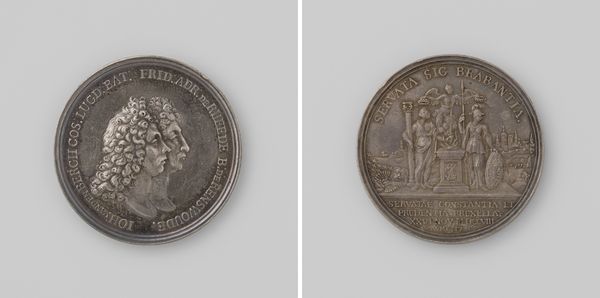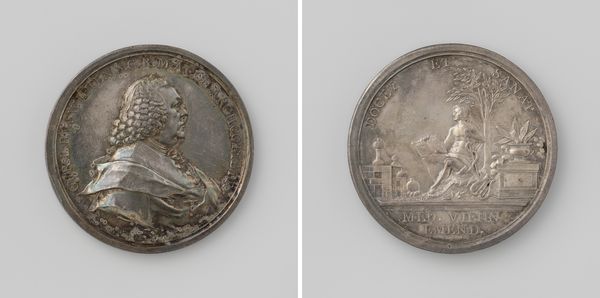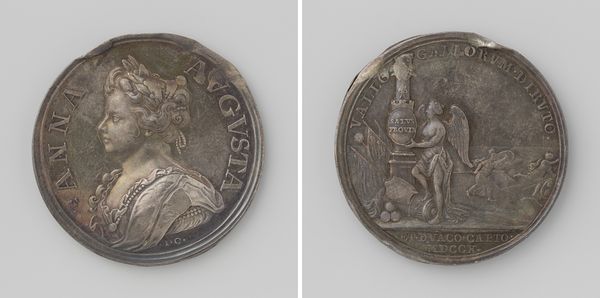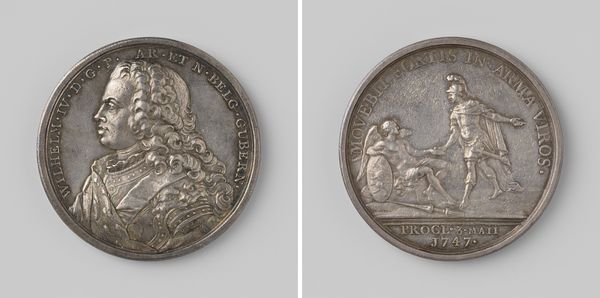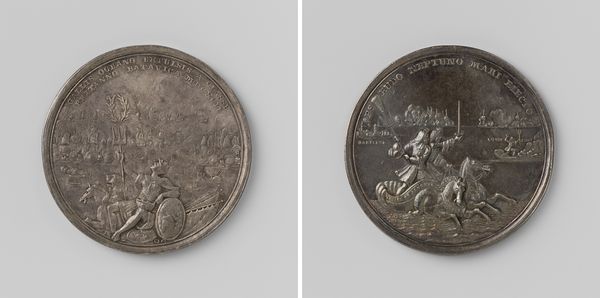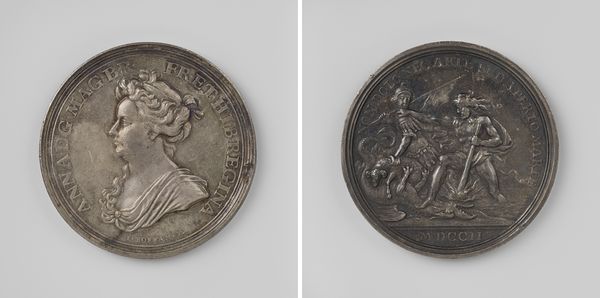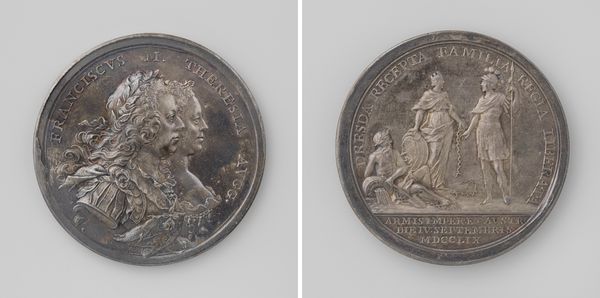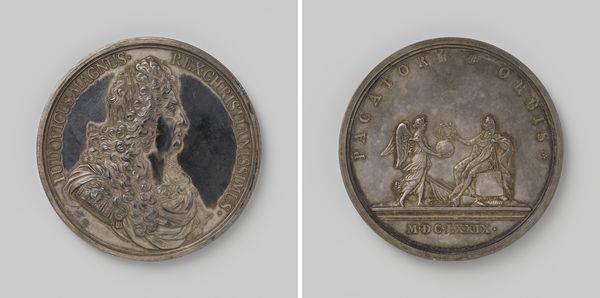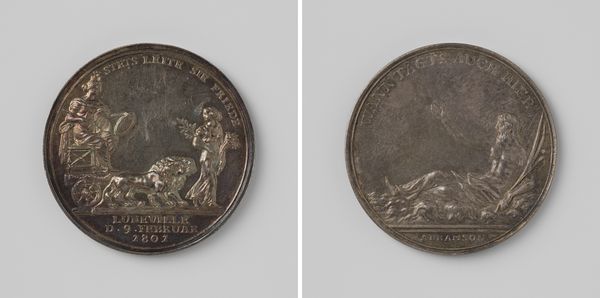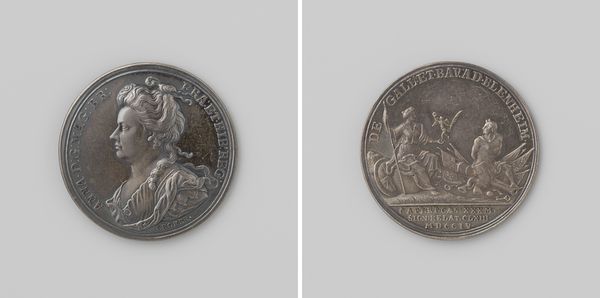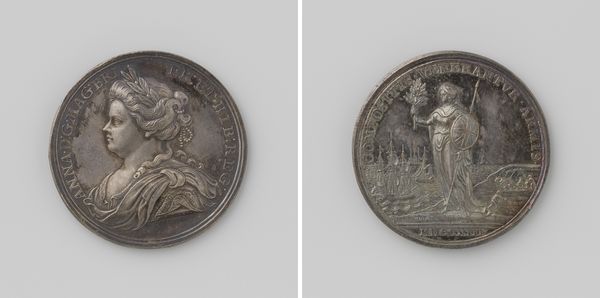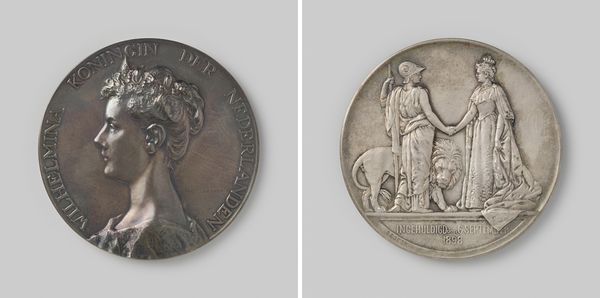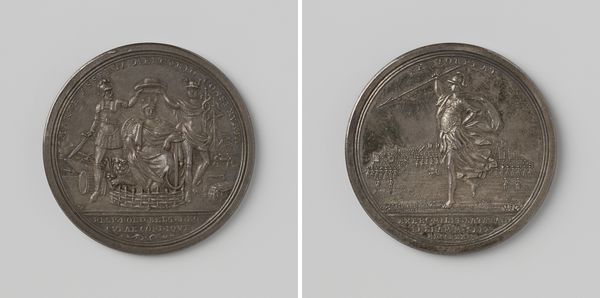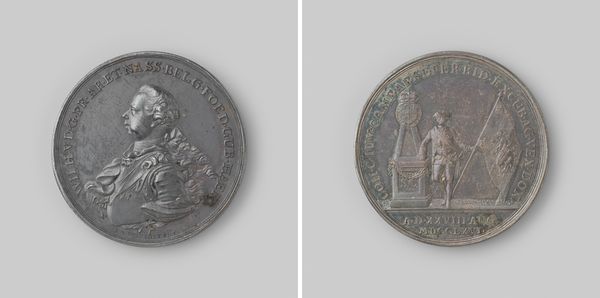
metal, sculpture
#
baroque
#
metal
#
sculpture
#
sculpture
#
history-painting
Dimensions: diameter 5.9 cm, weight 96.15 gr
Copyright: Rijks Museum: Open Domain
Curator: Gazing upon this dual-faced metal artwork depicting, as its title suggests, the grand "Entry of Philip V, King of Spain, into Madrid," made between 1699 and 1703, evokes a sort of austere formality, don't you think? It feels very… deliberate. Editor: Deliberate is a kind word. Cold is the one that springs to mind. This material speaks volumes—cool, hard metal, presumably silver given the light. And two distinct scenes stamped into either side. Let’s dig into the production: How many of these were made? Who were they for? Were these just trinkets for the upper class? Curator: I see your point; these aren't exactly cuddly objets d'art! But consider this was the Baroque period, a time when art often served a didactic purpose. On one side, you have a portrait of Philip, looking every bit the regal ruler, while on the reverse, a figure representing Spain kneels before a figure resembling Felicitas, who holds attributes referring to public happiness, concord, and prosperity! It reads like carefully planned propaganda. Editor: Precisely! It's about controlling the narrative, isn't it? Taking a somewhat mundane event - a royal entry - and immortalizing it in a medium that implies permanence. And metal... such an industrious, extracted and smelted material! We should be asking what were the human cost was in extracting this metal. Were any forced to provide labour? What of this says Spain deserves, "happiness" if Spain can only be made by exploitation? I just find the stark contrast unsettling. Curator: Ah, the melancholic poetry of historical awareness. But perhaps also a glimmer of artistic expression? The lines, though firm, have a certain grace. Is it possible the artist attempted to elevate a state commissioned piece? It seems at once like this artist celebrated Philip's glory but questioned if a Monarch could provide felicity. There's nuance, don't you think? Editor: Nuance buried beneath layers of political strategy and metallurgical labor, perhaps. It still gives off a cold feeling—as if power is always a cold thing. These objects don’t stand alone. They echo a much wider, more complicated landscape of materials, labour, power, and inequality.
Comments
No comments
Be the first to comment and join the conversation on the ultimate creative platform.
